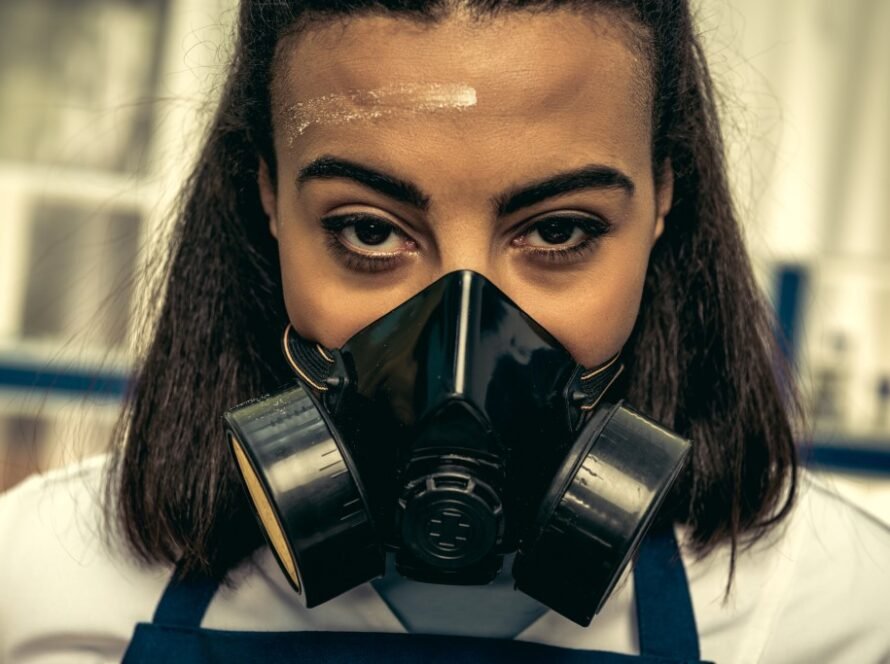Several things commonly found in houses can be associated with increased cancer risk, often due to exposure to harmful substances.
Some of the main ones include the following 14:
1) Asbestos: Though less common in newer homes, asbestos is often found in older homes. Asbestos can be present in insulation, floor tiles, roofing and other building materials. When disturbed, asbestos fibers can be Inhaled and can lead to lung cancer and mesothelioma.
2) Formaldehyde: Used in some building materials and household products like furniture, plywood, carpets and some fabrics, resins, textiles and some paper products, formaldehyde exposure has been linked to cancers, including leukemia and nasal cancers. Exposure can occur through off-gassing.
3) Chemicals in Cleaning Products: Many household cleaning products contain volatile organic compounds (VOCs) and other chemicals like formaldehyde, which are known or suspected carcinogens if inhaled or absorbed through the skin. These can be found in polishers, detergents, sanitizers, and more.
4) Non-Stick Cookware (PFAS): Per- and polyfluoroalkyl substances (PFAS), used in non-stick cookware with coatings like Teflon, can release toxic fumes when overheated, have been linked to various health issues, including cancer. These chemicals can also be found in water-resistant clothing, food packaging, and more.
5) Cosmetics and Personal Care Products: Some contain parabens, formaldehyde-releasing preservatives, phtalates and other chemicals that might be linked to cancer, though the evidence for direct causation can be mixed.
6) Plastic and Food Containers: Products containing BPA (Bisphenol A) and phthalates, often found in plastics, can leach into food or drinks, potentially increasing cancer risk due to their endocrine-disrupting properties.
7) Tobacco Smoke: Smoking is dangerous, but also Secondhand smoke from cigarettes contains over 70 known carcinogens, affecting not just smokers but also anyone in the vicinity, significantly raising the risk of lung cancer and other types of cancer.
8) Lead: Often found in old paint and plumbing, lead poisoning can have various health effects, including an increased risk of cancer.
9) Pesticides and Herbicides: Products like Roundup, containing glyphosate, are controversial but have been classified by some agencies as probably carcinogenic to humans.
10) Mold: While not a direct carcinogen, chronic mold exposure can cause respiratory issues and other health problems that may increase cancer risk indirectly.
11) Air Fresheners and Scented Products: Against any good feeling that a good scent in a home can provide, these often contain phthalates, which are linked to cancer and reproductive issues. They release VOCs into the air, contributing to indoor air pollution.
12) Electromagnetic Fields (EMF): While the link to cancer is still debated, some studies suggest a potential increase in cancer risk from long-term exposure to high levels of EMF from devices like Wi-Fi routers, cell phones, and other electronics.
13) Water Contaminants: Tap water might contain chlorine byproducts, arsenic, or other contaminants that, in high enough concentrations, could be carcinogenic.
14) Radon: Radon is the second leading cause of lung cancer after smoking. It’s a naturally occurring radioactive gas that can seep and accumulate into homes from the ground, especially in areas with certain types of rock and soil and in homes with poor ventilation, in basements and lower levels. Long-term exposure to high levels of radon is linked to lung cancer.
Finally, if you’re wondering about granite countertops, the levels of radiation and radon emitted from granite countertops are generally very low and not considered dangerous. If you’re concerned, you can have them tested for comfort and certainty about the levels of radiation emitted.
Conclusion: The discussion around household items and cancer often involves a mix of scientific research, regulatory assessments, and public health advice. While some items have clear evidence linking them to cancer (like radon, tobacco smoke and asbestos), others might be based on precautionary principles or preliminary research. It’s important to be aware of these potential risks and take steps to minimize exposure to known carcinogens, improving ventilation, choosing natural or certified safe products, and regular testing for radon or other environmental contaminants are common recommendations for minimizing risk. However, individual risk also depends on factors like genetics, overall exposure levels, and lifestyle.
If you have specific concerns, it might be worth consulting with a professional to assess and address potential hazards in your home.



1 Comment
Comments are closed.